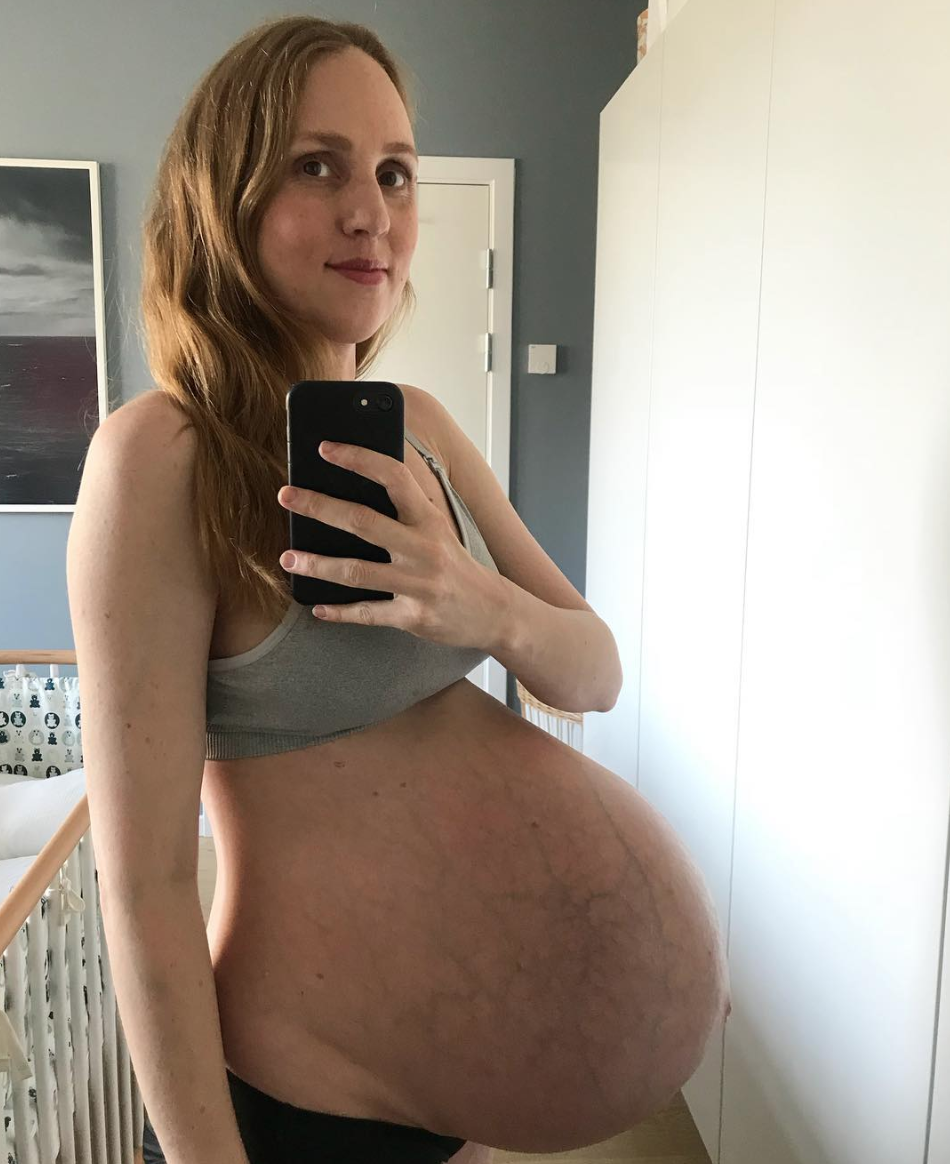'Triplets of Copenhagen' mom gives birth — as docs praise her 'miraculous' 34-week belly
Maria Jorstad’s triplets were born less than a day ago, but chances are they’re already beating you in Instagram followers. That’s thanks to their mom’s clever Instagram (@Triplets_of_Copenhagen) and the sheer awe with which the Internet has been viewing her previously pregnant belly.
Pictures of the 36-year-old at 34 weeks pregnant were so striking they went viral, leading to write-ups on news sites from Australia to Los Angeles. Headlines struggled to comprehend her ability to carry that much weight, responding with “just wow” and “[this] defies physics.” According to Jorstad’s Instagram (she didn’t reply to Yahoo Lifestyle’s request for comment), she and Anders successfully welcomed three beautiful babies into the world yesterday: Iben, Agnes, and Filip.
A post shared by triplets_of_copenhagen (@triplets_of_copenhagen) on Sep 12, 2018 at 2:44pm PDT
But while the story has a happy ending, it doesn’t answer the question: How exactly can the female body carry that much weight, and what actually happens in the process?

Dr. Jessica Shepherd, an ob-gyn and women’s health expert in Dallas, says that the growth is proof of how incredible the female body is. “Any type of multigestation, you are going to see a significant growth in the abdomen because you’re housing more than one human. The organs need to shift to make room, and with the addition of two fetuses you can only do so much shifting upwards against the main organs — so it has to get pushed outward,” Shepherd tells Yahoo Lifestyle. “That just goes to show how amazing the human body is, because it can actually accommodate it.”
As far as the visible blood vessels, Shepherd says that’s a healthy sign. “In any pregnancy, you have to increase the vascularity, because you’re now supplying blood supply for extra humans, so you’ll see that manifest in the vascularity of the skin, and because she’s fair you’re seeing it more,” says Shepherd. “[Since] she’s housing more than one human, everything is increased substantially.”
As far as the actual size of her belly, Shepherd says that all women carry babies differently — and those who are naturally small can sometimes hold most of the weight in their belly. “Some people carry more in their hips or buttocks, that’s a genetic pre-disposition,” says Shepherd. “But with multiple babies, like triplets or quads, you’ll have a very large abdomen. The skin is composed of connective tissue so it can — and will — stretch.”
Sheryl A. Ross, MD, an ob-gyn and author of She-ology: The Definitive Guide to Women’s Health, has a similar assessment. “Pregnancy — whether you’re carrying one, two, or three — shows how a woman’s body is truly a miraculous thing,” Ross tells Yahoo Lifestyle. “It’s truly a transformation, and every body handles it differently.”
Ross says that in Jorstad’s case, being naturally thin makes carrying three babies look even more difficult. But although it may look painful to see a stomach stretched to such extremes, as Jorstad details in a side-by-side Instagram post, Ross says that’s not likely the part that hurts. “The skin is elastic — there are a lot of elastic qualities in it, like a rubber band, so it’s an easier area to stretch,” she says. “I think what hurts more is the weight of it all … which can put a lot of pressure on the back.”
While many of Jorstad’s post were less serious in nature, focusing on clothes she’s been sent by strangers, or the oversized crib she and her husband purchased for their room, others delved into the challenges of carrying three babies. “What a journey this has been!” Maria writes. “I’m glad we took these pictures, because this collage really shows the massive growth. It’s strange to have ended up with such a big belly, and it’s even stranger that it can stand out like that without falling down!”
A post shared by triplets_of_copenhagen (@triplets_of_copenhagen) on Sep 9, 2018 at 2:50pm PDT
Now that her babies have been born, Jorstad may get some relief from carrying all that weight. But Dr. Shepherd says the new mom shouldn’t expect things to change immediately. It could take up to a year for her to get to her pre-partum weight,” she tells Yahoo Lifestyle. “It will take time, but genetics play a role, too.”
No matter what the future holds for Jorstad, it’s safe to say she’s a hero in the eyes of many.
Read more from Yahoo Lifestyle:
Follow us on Instagram, Facebook, and Twitter for nonstop inspiration delivered fresh to your feed, every day.

